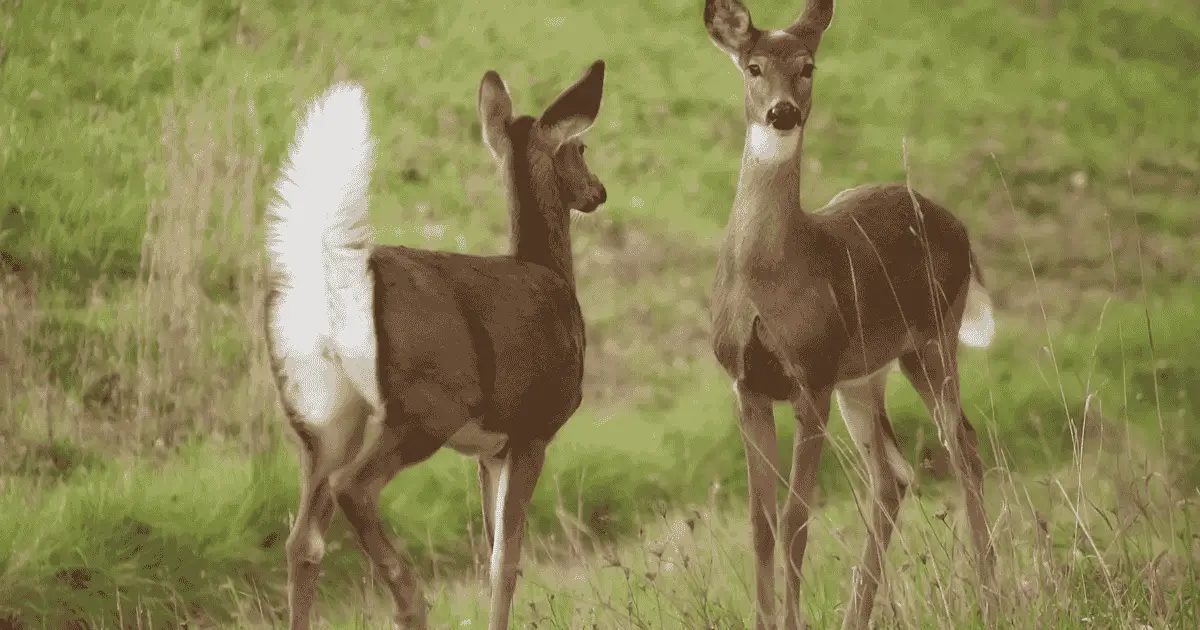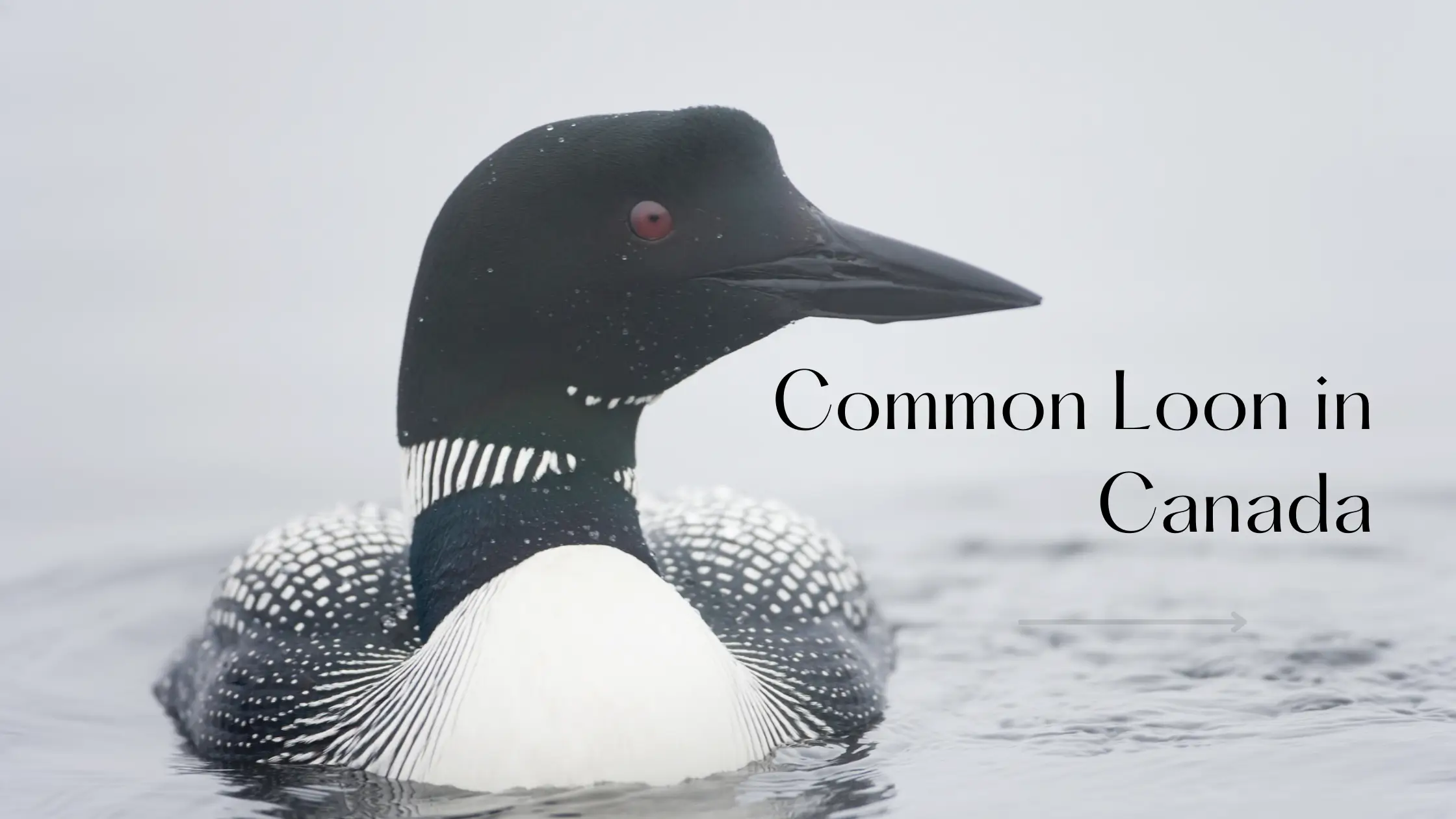White-tailed deer are common across much of Canada. They’re easy to spot because of their white tail and that is how they got their name. These deer can live in many different places, like thick forests and open grasslands.
They’re good at adapting to different environments. Many people find white-tailed deer beautiful and interesting to watch. Their graceful look and the way they behave make them popular animals in Canada.
Physical Characteristics and Features of the White-tailed deer
These are the features of the graceful White-tailed deer:
| Features | Relevant Information |
|---|---|
| Scientific Name | Odocoileus virginianus |
| Life Span | Typically 3-7 years in the wild, but can live up to 20 years |
| Diet | Herbivore diet |
| Height | Height at the shoulder is 80-105 cm (31-41 inches) |
| Average Weight | typically ranges from 45 to 130 kg |
| Habitat | It includes forests, woodlands, grasslands, and swamps |
| Status of specie | Not Endangered |
Fascinating Facts about the White-tailed deer
These are the fascinating facts about the White-tailed deer that you may like:
1. Adaptive Masters
White-tailed deer are incredibly adaptable, they can live in a variety of habitats from dense forests to suburban areas.
2. Dietary Diversity
Their diet changes with the seasons, allowing them to survive in different environments.
3. Impressive Jumpers
They are known for their agility white-tailed deer can jump up to 3 meters (10 feet) high and cover distances of up to 9 meters (30 feet) in a single bound.
4. Camouflage Experts
Their coat changes color with the seasons providing excellent camouflage for survival.
5. Social Creatures
White-tailed deer form loose groups during winter.
6. Vital Ecosystem Role
They are a crucial part of the food chain serving as prey for predators such as wolves, coyotes, and cougars.
7. Human Interactions
Unfortunately, deer-vehicle collisions are a common issue in many parts of Canada.
8. Cultural Significance
The white-tailed deer holds cultural significance for many Indigenous peoples in Canada.
9. Winter survival
In harsh Canadian winters, they grow a thicker, greyish-brown coat and can lower their metabolism to conserve energy.
10. Antler growth
Male deer (bucks) grow and shed new antlers each year with antler size generally increasing with age.
11. Economic impact
They’re an important game species contributing significantly to Canada’s hunting industry.
12. Albinism
Rare albino white-tailed deer have been spotted in various parts of Canada, causing excitement among wildlife watchers.
Subspecies of White-Tailed Deer in Canada
There are numerous subspecies of white-tailed deer across North America, Canada primarily hosts two main types:
-
1. Northern White-Tailed Deer (Odocoileus virginianus borealis)
This subspecies is the most common in Canada, found across the eastern part of the country from Manitoba eastward. They are typically larger and have thicker coats to withstand colder climates.
-
2. Dakota White-Tailed Deer (Odocoileus virginianus dacotensis)
Found in the prairie provinces, these deer are adapted to grassland environments. They are generally smaller than their other species.
Sightseeing of White-tailed deer in Canada
In Canada, you can see White-tailed deer in these regions of the country:
| Direction of the Country | Places where White-tailed deer can be found |
| Western Side | British Columbia |
| Eastern Side | Quebec, Ontario, Nova Scotia and New Brunswick |
| Central Side | Manitoba, Saskatchewan, and Alberta |
Pro Tip: They mostly like to live on farmlands and the edges of the forests so you should look in these specific areas
Best Time to See the White-tailed deer in Canada
Here is the best time to see the White-tailed deer in Canada
Season
Months
Spring
April to May (as the snow melts deers come out of winter cover and are more visible)
Fall
October to November (the males actively seek partners for mating)
Pro Tip: They are mostly active during the dawn and the dusk.
FAQs
Where did the White-tailed deer originate?
White-tailed deer originated in North America. They’ve been here for a very long time. These deer first showed up about 2.5 million years ago. They spread across most of North and Central America over time. They were already living all over Canada and the United States before Europeans came.
How long are the White-tailed deer pregnant?
White-tailed deer moms are pregnant for about 6.5 to 7 months. This is around 200 to 205 days.







